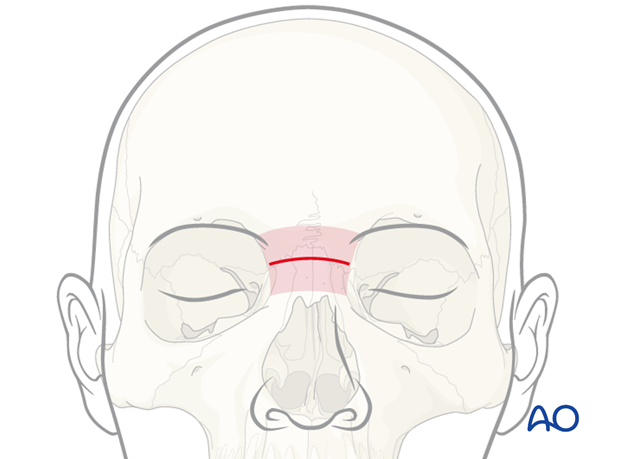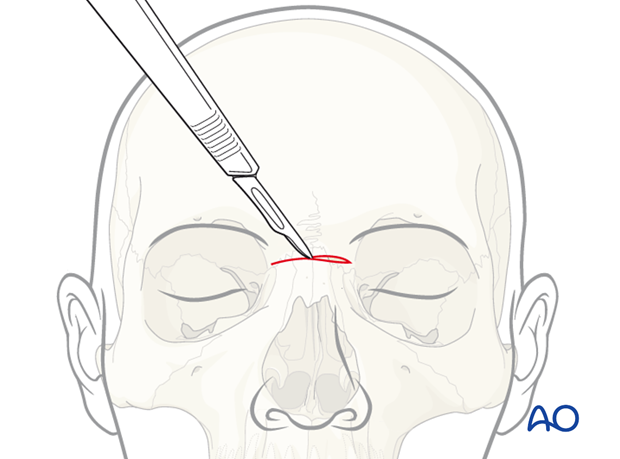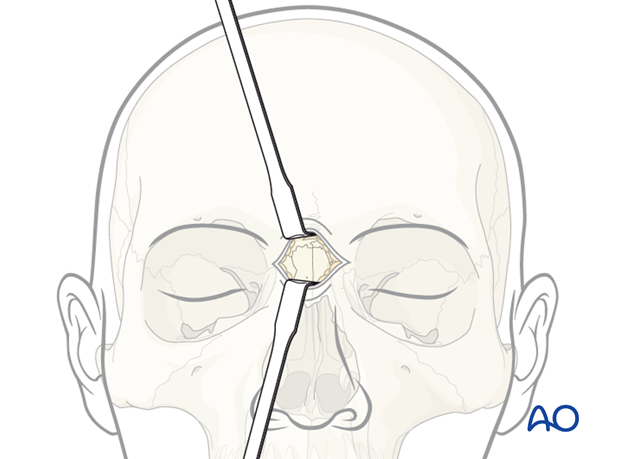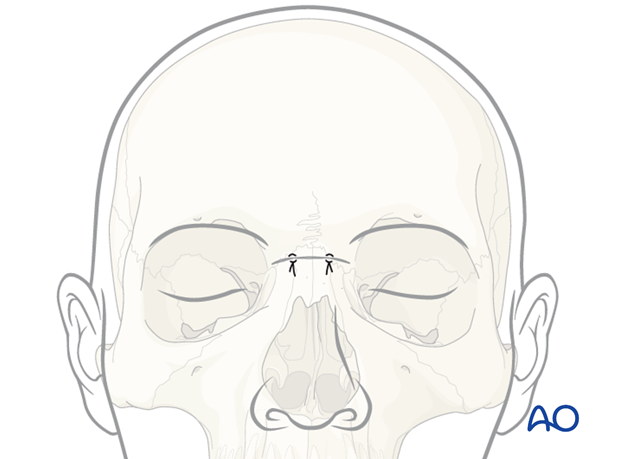Glabellar approach
1. General considerations
The glabellar approach can be particularly advantageous in elderly patients who have developed horizontal glabellar furrows due to the action of the procerus muscle. This approach may also be considered in order to avoid a coronal incision where only limited exposure is needed in a younger patient with a receding hairline, or in a bald patient.
An example of where a limited exposure may be necessary in the nasofrontal area is a Le Fort II or III fracture.
The most common approach for reduction of NOE fractures is a combined approach of coronal incision, lower eyelid incision, and a maxillary vestibular incision. This combined approach is often required to obtain stabilization of the extensive comminuted fracture. Some surgeons use these combined incisions, but substitute the glabellar approach for the coronal incision.
2. Skin incision
Locating the skin incision
The incision should be planned in the glabellar furrows or, if appropriate, in the region camouflaged by the bridge of eyeglasses.

Skin incision
Perform a skin incision with a scalpel along the planned incision line. Sharp dissection can then be carried down through the periosteum.

3. Exposure
Exposure of the bone
Using retractors, the bone can be exposed.

4. Wound closure
A simple layered closure is performed as for any laceration in this area.













